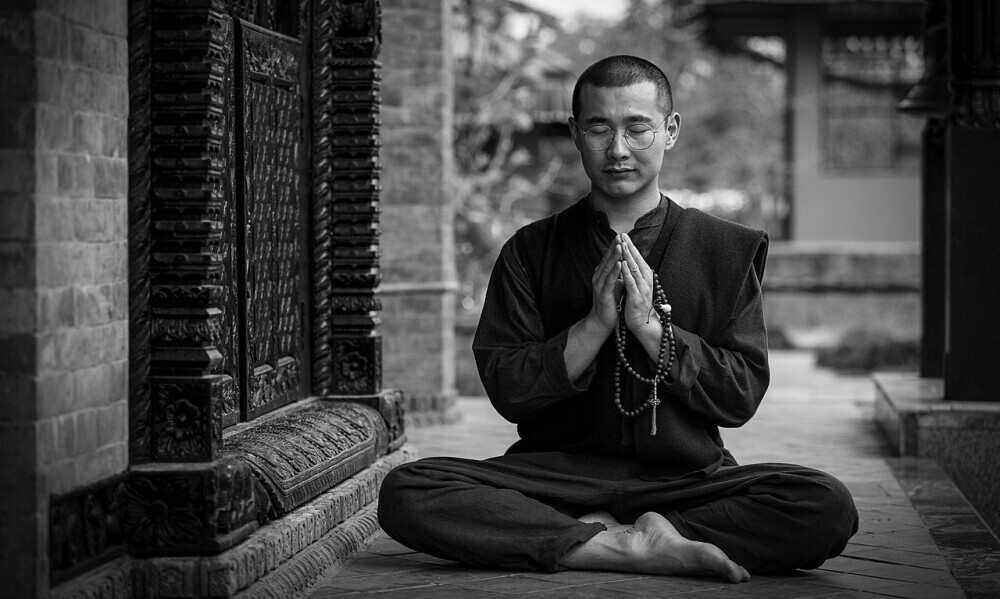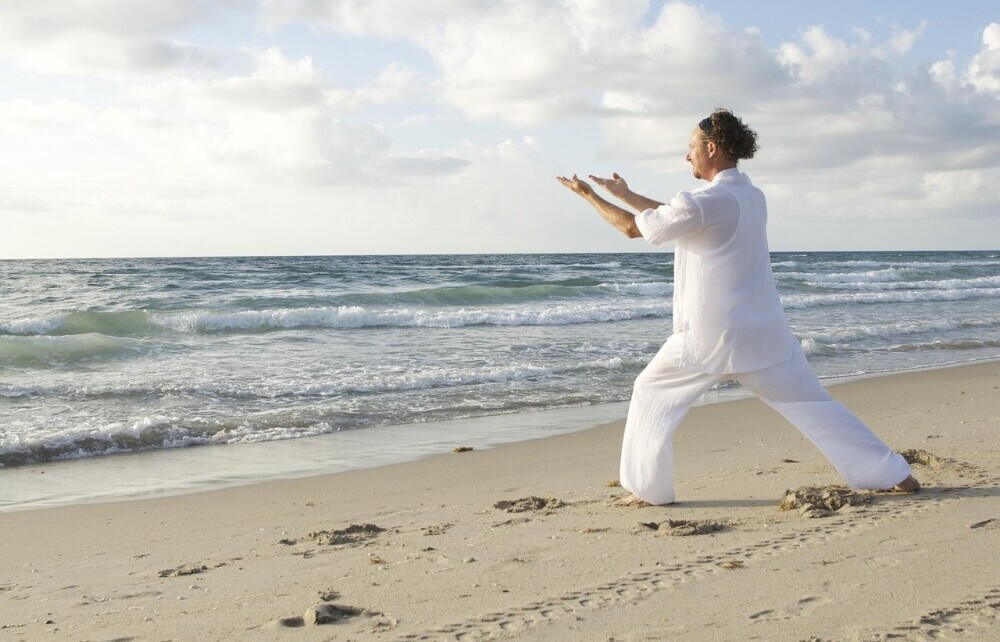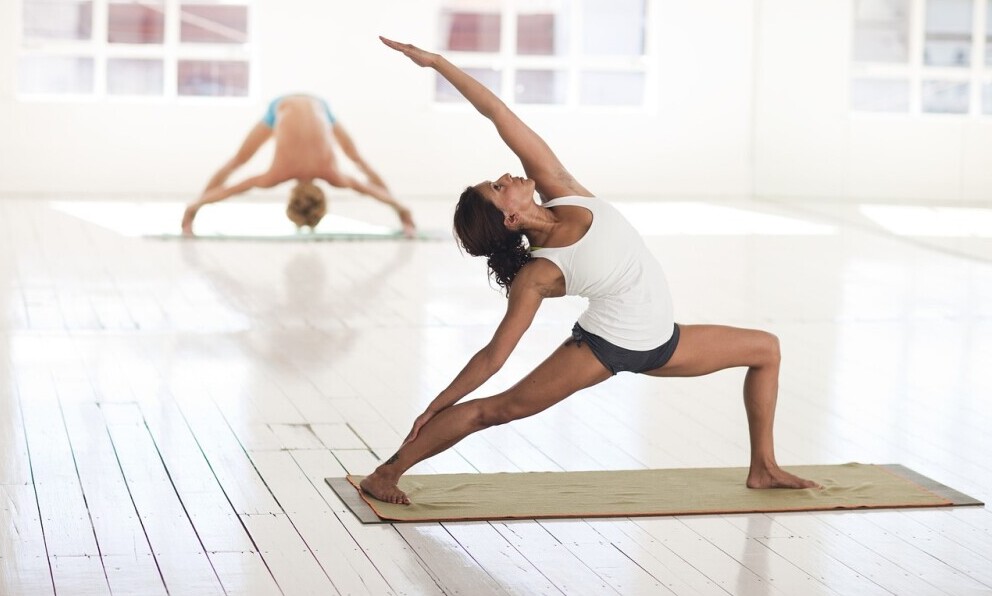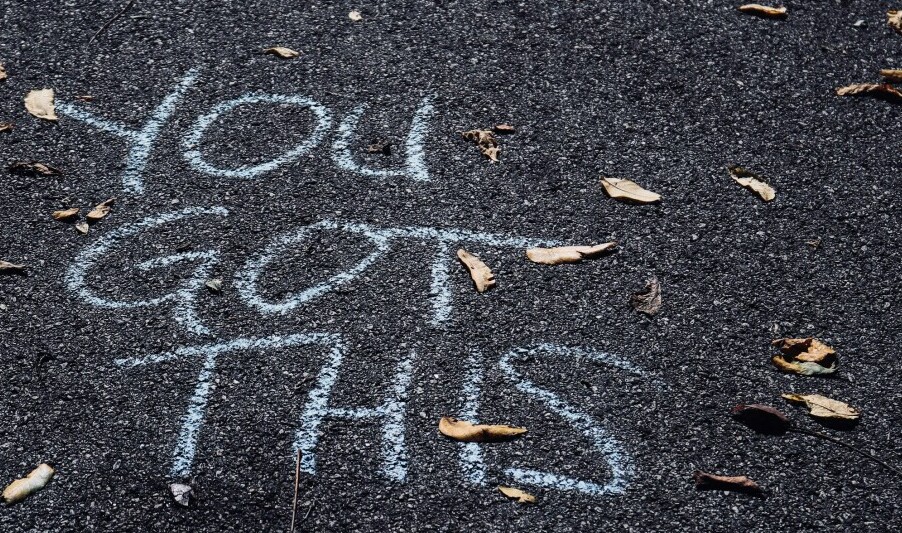Beginners Guide To Yoga At Home
Yoga at home opens a world of flexibility and control over your practice. It’s about creating an environment that’s both convenient and easily accessible, making it perfect for beginners looking to build a routine without the pressure of a studio setting. Whether you’re rolling out your mat in the living room or finding a quiet spot in the bedroom, home practice empowers you to set your own pace.

So many perks come with doing yoga at home. First off, there’s the comfort factor. You can wear whatever you want, crank up your own playlist, and pick the vibe that suits your mood for the day. Plus, you’re saving time and money by skipping studio memberships and commutes.
Finding the right spot is key and doesn’t need to be complicated. Look for a space that gives you enough room to stretch out without bumping into furniture. Natural light boosts energy and focus, but a quiet nook works just as well for creating that perfect zen zone.
You’ll want to have some basic tools on hand. A reliable yoga mat is a must for cushioning and grip. Yoga blocks and straps are handy for modifying poses as a beginner. And don’t forget a blanket or a bolster for added comfort in your resting postures.
Having a safe setup means preventing slips and spills, so think about the floor surface and any potential tripping hazards nearby. It’s about finding what makes you feel good and ready to fully dive into your session with a clear mind.
Choosing the Best Yoga Style for Beginners
Starting yoga can be exciting yet overwhelming with all the different styles buzzing around. Picking the right one can make your journey smoother and way more fun. You gotta consider what you’re after—are you looking to chill, break a sweat, or maybe both? Your choices should jive with your goals and how your body feels right now.

Hatha yoga is a solid pick for newbies since it covers the basics like a pro. It usually moves slower and breaks down poses step-by-step, letting you grasp the essentials without feeling rushed. If you’re on the lookout for something more dynamic, give Vinyasa a shot. It’s great for those who enjoy flowing movement aligned with breath.
For relaxation and stress relief, Restorative yoga shines. It focuses on holding gentle poses longer, using props for support. This tranquil style helps melt away tension and gives you a hacker-level boost in mindfulness.
Comparing online classes and rolling solo has its pros and cons. Online classes deliver structured guidance, which is awesome for picking up correct form and keeping motivated. Solo sessions at home, meanwhile, offer the freedom to improvise and experiment.
Motivation can dip from time to time, but keeping a routine helps. Setting small goals can fuel your practice. Take some time to reflect on which styles resonate with your vibe and personal needs. Remember, the best yoga style is the one you’ll stick with and enjoy.
Crafting Your Daily Yoga Routine
One of the big questions beginners face is how long they should practice each day. It’s all about starting small and working your way up. Twenty to thirty minutes a day is a sweet spot for new yogis to explore different poses and techniques without feeling overwhelmed.

Consistency is key here. Having a routine can help you stay on track and make yoga a regular part of your life. You might want to spend the first few minutes focusing on your breath before flowing into a series of simple poses. Sun Salutations are a great starting point—offering a balanced mix of stretching and strengthening.
Incorporating mindfulness into your routine can elevate your practice. Paying attention to your breath, moving with intention, and listening to your body can lead to greater awareness and more enjoyable sessions. It’s not just about doing yoga—it’s about feeling it!
Progression should be natural and suit your comfort level. Don’t rush into advanced poses. Your body will tell you when it’s ready to take on more challenging moves. Keep an eye on how you feel after each session to ensure you’re not pushing too hard.
Taking it one step at a time with consideration for your schedule and energy levels guarantees a sustainable yoga practice. On those busier days, a shorter, mindful practice can be as effective as a longer session. Flexibility—in more ways than one—will help keep your practice flexible and fitting for your lifestyle.
Yoga and Weight Loss: Setting Realistic Expectations
Yoga’s benefits go way beyond the mat, and yes, it can be part of a holistic approach to weight loss. But let’s keep it real—expecting dramatic drops in pounds from yoga alone might lead to disappointment. What yoga does really well is support healthy habits and a feel-good mindset.

Yoga helps build strength, flexibility, and balance, which makes physical activities easier. It also promotes mindfulness, which shifts attention towards healthy eating habits and stress management. Practicing regularly might not torch a ton of calories like a full-on cardio blast, but it gets your heart rate up and muscles moving—pretty good for a start!
Pairing your practice with other healthy lifestyle choices ramps up results. A balanced diet, hydrating plenty, and getting enough sleep go hand-in-hand with what you’re building through yoga. This combo can contribute to gradual, sustainable weight loss.
Rather than focusing purely on the scale, set goals around what you’d like to achieve in your yoga practice—be it mastering a new pose, improving flexibility, or feeling more peaceful. These wins boost motivation and help measure progress beyond numbers.
Ultimately, yoga’s about balance, both physically and mentally. Embrace it for wellness and vitality, with any weight loss simply being a bonus to the amazing benefits yoga offers.
Buy your yoga mat here…
Click here to sign up for future updates…
Disclaimer: This page contains affiliate links. If you choose to make a purchase after clicking a link, we may receive a commission at no additional cost to you. Thank you for your support!






This guide provides a wonderfully comprehensive introduction to practicing yoga at home, especially for beginners. The emphasis on creating a personalized and flexible environment is refreshing. It acknowledges the appeal of practicing yoga without the pressure or expense of a studio setting, which makes it accessible to everyone. The practical tips, like finding a quiet spot and ensuring the right equipment, are spot-on and make it easier for anyone to get started.
The breakdown of different yoga styles is especially helpful for newbies who might feel overwhelmed by the variety. Highlighting Hatha yoga for its slower pace and focus on foundational poses is a great suggestion, while offering alternatives like Vinyasa and Restorative yoga caters to various needs, from dynamic movement to stress relief. This balance of options ensures everyone can find something that resonates with their goals.
The section on crafting a daily routine encourages a realistic and gradual approach, which is crucial for building consistency. It’s reassuring to see the focus on mindfulness and listening to one’s body, as this prevents burnout and fosters a sustainable practice. The honest discussion about yoga and weight loss is also commendable—it sets realistic expectations while showcasing yoga’s broader benefits for mental and physical wellness.
Overall, this guide strikes the perfect balance between practicality and inspiration, making it a must-read for anyone beginning their yoga journey!
Thank you so much for your thoughtful review! I’m thrilled to hear that you found the guide comprehensive and beginner-friendly. It’s great to know that the emphasis on a personalised and flexible home environment resonated with you, as accessibility is key in making yoga approachable for everyone. I appreciate your feedback on the breakdown of yoga styles—finding the right practice can indeed be overwhelming, and I’m glad the suggestions for different approaches were helpful. Crafting a daily routine is essential for consistency, and I’m glad it stood out to you. Your insights will surely encourage more readers to embrace yoga at home!
KR
Nikki
This is gold. I learned a lot from choosing the best type/style of yoga (sorry, I almost, always call it yogurt) crafting the best routines, and the relationship between yoga and weight loss. I didn’t know that simple exercises like yoga could help a lot in one’s body, especially when it comes to weight loss for those who feels they need to reduce some pounds.
After reading these tips and tricks, can I also come up with my own yoga styles not mentioned in any of these, or is it dangerous and harmful to my body to start a brand-new style that I might share with other later, at least if it proves to work well?
John
Hi John,
Thank you for your thoughtful review! I’m thrilled to hear you found the tips on yoga helpful, especially in relation to weight loss. Creating your own yoga style can be both exciting and a bit challenging. It’s important to ensure it’s safe and beneficial for your body. I recommend consulting with experienced instructors or doing thorough research before sharing your style with others. Keep exploring and trust your instincts!
KR
Nikki